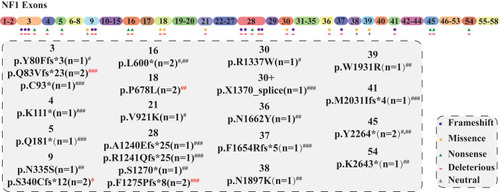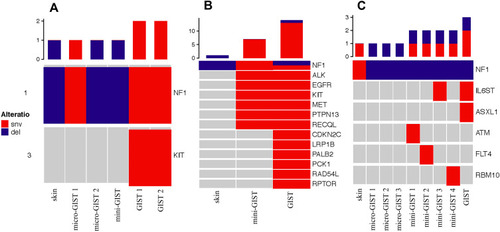Figures & data
Figure 1 Case screening flow chart.

Table 1 Clinical Characteristics of GIST with NF1 Mutation
Table 2 The Mutation Types and Their Differences Between mNF1 with mKIT and mNF1 with wtKIT
Table 3 Concurrent Mutation of NF1 and KIT in GISTs Patients
Figure 2 The mutation loci and subtypes within the NF1 gene and their corresponding pathogenicity in GISTs.

Table 4 NF1 Concurrent with KIT Mutation
Figure 3 KIT mutations loci and subtype.

Figure 4 The genomic landscapes of skin neurofibroma and GISTs in 3 cases of type I neurofibromatosis.

